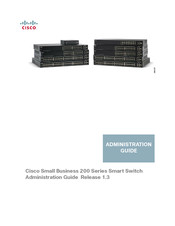Cisco Small Business 200 Manuals
Manuals and User Guides for Cisco Small Business 200. We have 1 Cisco Small Business 200 manual available for free PDF download: Administration Manual
Advertisement
